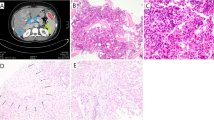Abstract
Polycythemia vera (PV) is a chronic myeloproliferative disorder characterized by an abnormal increase in red blood cells. The involvement of the heart during the course of the illness represents a common cause of morbidity and it is linked to an increased thrombogenic risk subsequent to higher blood viscosity. In our study we evaluated by echocardiography a PV patient population. Our study enrolled 44 patients affected by PV. 17 of them were women and 27 were men. Mean patient age was 66.7. The average follow-up period was 5 years and the average duration of the illness was 5.7 years, since the time of diagnosis. All patients were evaluated quarterly by a cardiovascular objective examination and an ultrasound of the heart, with regard to platelet count and hematocrit (Ht) variations during the follow-up period, according to the therapy administered. Patients were treated with hydrossiurea and pipobroman and they underwent an eritrocitoapheresis in emergency conditions in which Ht levels rose too much, in spite of the myelosuppressive therapy. The echocardiographic assessment of the heart structure and function by the B mode technique revealed the presence of a sclerocalcific degeneration of the aortic valve in 58 % of patients, involving the aortic root more then the valve. An average trans-aortic flow velocity of 1.92 m/s was detected by Doppler technique; a stenosis was demonstrated in 11 patients (25.5 % of the entire population). After diagnosing the presence of a stenosis, we researched a possible cause of it. PV is a systemic disease well-known causing coronary thrombosis in a more or less high percentage of patients according to the record of cases taken into account. In our experience, more then thrombotic disease, found only in 13.4 % of patients, we detected a high prevalence and incidence of mild to severe aortic stenosis, found in 25.5 % of the sample studied. About all possible causes of stenosis, nowadays this results dependent of Ht values at moment of diagnosis, in the light of these results, it is reasonable to infer that aortic valve stenosis could depend by high haemodynamic stress on valve that is characteristic of polycythemic patients without chemotherapy.



Similar content being viewed by others
Abbreviations
- PV:
-
Polycythemia vera
- Ht:
-
Hematocrit
References
Stuart BJ, Viera AJ (2004) Polycythemia vera. Am Fam Physician 69(9):2139–2144
Spivak JL (2002) Polycythemia vera: myths, mechanisms, and management. Blood 100(13):4272–4290
Tefferi A, Vardiman JW (2008) Classification and diagnosis of myeloproliferative neoplasms: the 2008 World Health Organization criteria and point-of-care diagnostic algorithms. Leukemia 22:14–22
Cazzola M (2007) Somatic mutations of JAK2 exon 12 as a molecular basis of erythrocytosis. Hematol J 92(12):1585–1589
Leone G, Sica S, Chiusolo P, Teofili L, De Stefano V (2001) Blood cell disease and thrombosis. Hematologica 86:1236–1244
Arora D, Juneja R, Pendarkar D, Mehta Y, Trehan N (2007) Off-pump coronary artery bypass grafting in a polycythaemic patient–case report and review of literature. Ann Card Anaesth 10(1):54–57
Bywaters EGL (1967) A case of polycythaemia with aortic stenosis. Br Med J 3(5569):848–852
Matsuyama N, Asada K, Kondo K, Kodama T, Minohara S, Hasegawa S, Sawada Y, Okamoto K, Sasaki S (1996) Surgical treatment of aortic stenosis with polycythemia vera: a case report. Kyobu Geka 49(13):1097–1099
Reisner SA, Rinkevich D, Markiewicz W, Tatarsky I, Brenner B (1992) Cardiac involvement in patients with myeloproliferative disorders. Am J Med 93(5):498–504
Conflicts of interest
The authors declare that they have no conflict of interest
Author information
Authors and Affiliations
Corresponding author
Rights and permissions
About this article
Cite this article
Fazio, G., Caracciolo, C., Barone, R. et al. An unknown cause of aortic valve stenosis: polycythemia vera. J Thromb Thrombolysis 35, 282–285 (2013). https://doi.org/10.1007/s11239-012-0786-7
Published:
Issue Date:
DOI: https://doi.org/10.1007/s11239-012-0786-7




